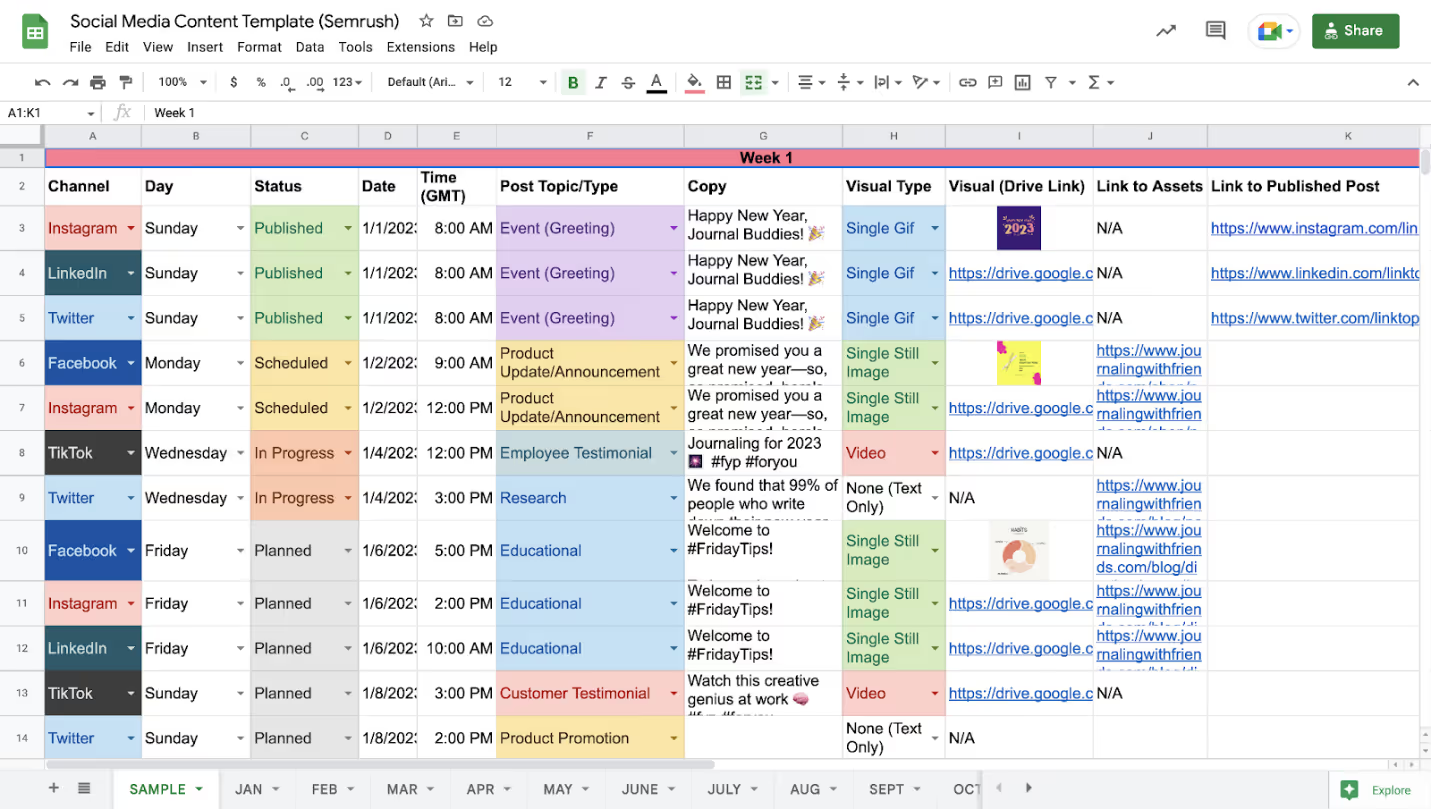How to Build a Social Media Calendar You Can Stick To
How to Build a Social Media Calendar You Can Stick To

A social media calendar gives you a schedule that you can follow for all of your social media content sharing. This schedule can include posts, re-posts and shares, networking and community building, or anything else that you have planned for your social media channels. Too often, marketers create overly ambitious calendars and don’t have the time or resources to execute them effectively. This results in social media campaigns suffering because they aren’t getting the attention that they deserve.
To avoid this, you need to build a social media calendar that fits your working style and your marketing team. Who’s in charge of social media? Who does the actual posting and content creation? All of these people need to be involved in the calendar creation process because they will all be following and using it.
What is a social media calendar?
Your social media calendar should provide a big-picture view of your social media strategy for the weeks and months ahead. This gives you the opportunity to coordinate content, plan for special events, and ensure that you don’t miss important deadlines.
Although the exact elements that you include on your calendar may vary, an effective model will provide the following information for your posts:
- Time and date to publish
- Platform to publish on
- Post format
- Content needed/included (copy, videos, images, etc.)
- Links, hashtags, and other optimization (such as topics, keywords, events, etc.)
There are all kinds of apps and tools out there to help you create a solid social media calendar. You can also just put it into a spreadsheet like this great example from Semrush:

A social media calendar is essential because it helps your team:
- Improve social media strategy
- Plan content around business needs or marketing efforts
- Stay ahead of schedule
- Maintain a consistent schedule (which boosts your visibility and reputation)
- Ensure content is error-free and ready to publish
You’ll have more time to react to changes or industry news. Your team will also work more efficiently and no one will be scrambling for last-minute engagement post ideas.
A lot of organizations still see social media as a tedious task or a chore that has to be tended to. However, with a little planning and preparation, you can actually find value in your social media strategy and use it to connect with your audience while marketing your products or services.
To do that, you need to know how to create the perfect calendar.
How to create your social media calendar
As you can see in the example above, a good calendar will provide you with all the essential elements of your social posts:
- What
- Where
- When
- Why
The why is especially important, and often overlooked. Including the organization’s goals in your social media calendar will keep everything in one place and make sure that the entire marketing team is on the same page.
Analyze platforms and find your best options
You might already have this information—if so, you’re a step ahead! If not, you don’t need to worry. It’s simple enough to do. Start looking at social media platforms. See where your competitors and industry connections are most active. More importantly, see where your audience is the most active. This could be one, two, or six different platforms—it will vary for each business.
Perform a social media audit
If you’re already on social media and just looking to improve things a bit with a calendar, you need to take stock of where things stand. After all, you can’t get better if you don’t know what “better” means. An audit will reveal platforms that may not be working at all, which you can then scrap so that you can focus on more successful channels.
This also makes it easier to manage changes and additions, and it gives you a chance to get a good look at how you can use your social media calendar to make improvements in your execution, strategy, and more.
Decide what content you will post
The mix of content that you choose is integral to your success on social media. The first thing you need to remember is that this isn’t the place for sales pitches and hard-sell content. This is a community where people want to engage and learn. You should be posting content that helps you build:
- Awareness
- Authority
- Trust
- Loyal followers
Most marketing experts suggest the 80/20 rule. In this case, that means that 80% of your content should inform, educate, or entertain people. The other 20% can be used for promotional marketing.
Or, you can use the rule of thirds, dividing your social media content into:
- Content you create or curate from followers
- Interaction with followers
- Product/service promotion
You’ll also want to make sure that you’re exploring a range of content options, including videos, images, text posts, link shares (of blogs, websites, etc.), user-generated content, infographics, etc. Make sure that you choose the right type of content based on the preferred consumption for each social media channel.
For example, text posts aren’t exactly a thing on TikTok, and while they might be somewhat effective on Instagram, they’re better for LinkedIn or Facebook.
Organize and prioritize
Now, you need to decide what you will actually include in your content calendar. In addition to the basics covered above, you might want to add other elements to help provide further clarification. Use color-coding, tags, and other categorization and editing tools to help you create a calendar that’s easy to follow for everyone who will use it.
From social networks to streamlined lead intake, Smith.ai has you covered
Once you’ve crafted the perfect social media calendar, you’re going to see an influx of leads if you do things right. Fortunately, you’re not alone—the virtual receptionists at Smith.ai can provide support for lead intake, appointment scheduling, and even assist with your outreach campaigns. Plus, we can offer 24/7 answering service support to ensure you never miss a lead.
To learn more, schedule a consultation or reach out to hello@smith.ai.
Take the faster path to growth. Get Smith.ai today.
Key Areas to Explore
Technical Implementation Terms
Voice user interface (VUl) design
Speech recognition integration
Text-to-speech optimization
API connectivity and webhooks
Real-time data synchronization

Your submission has been received!














.svg)



